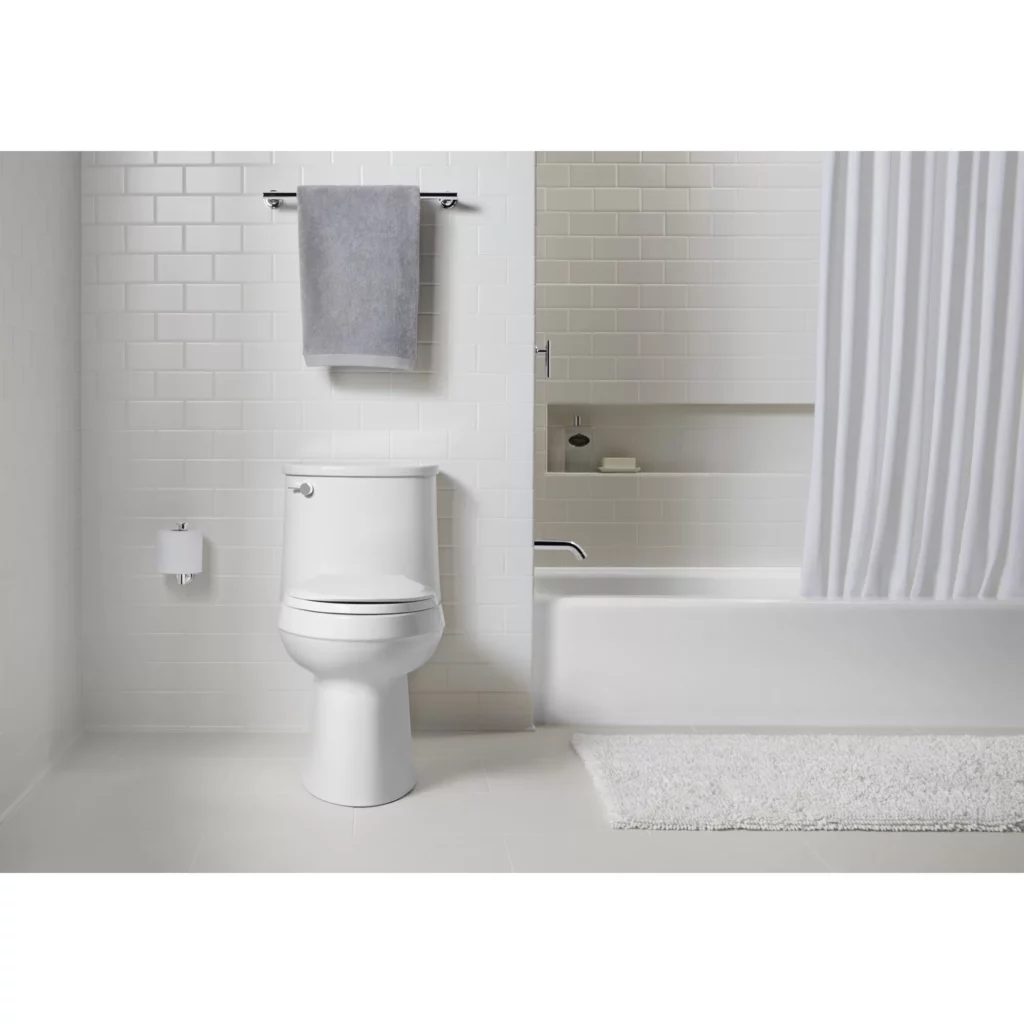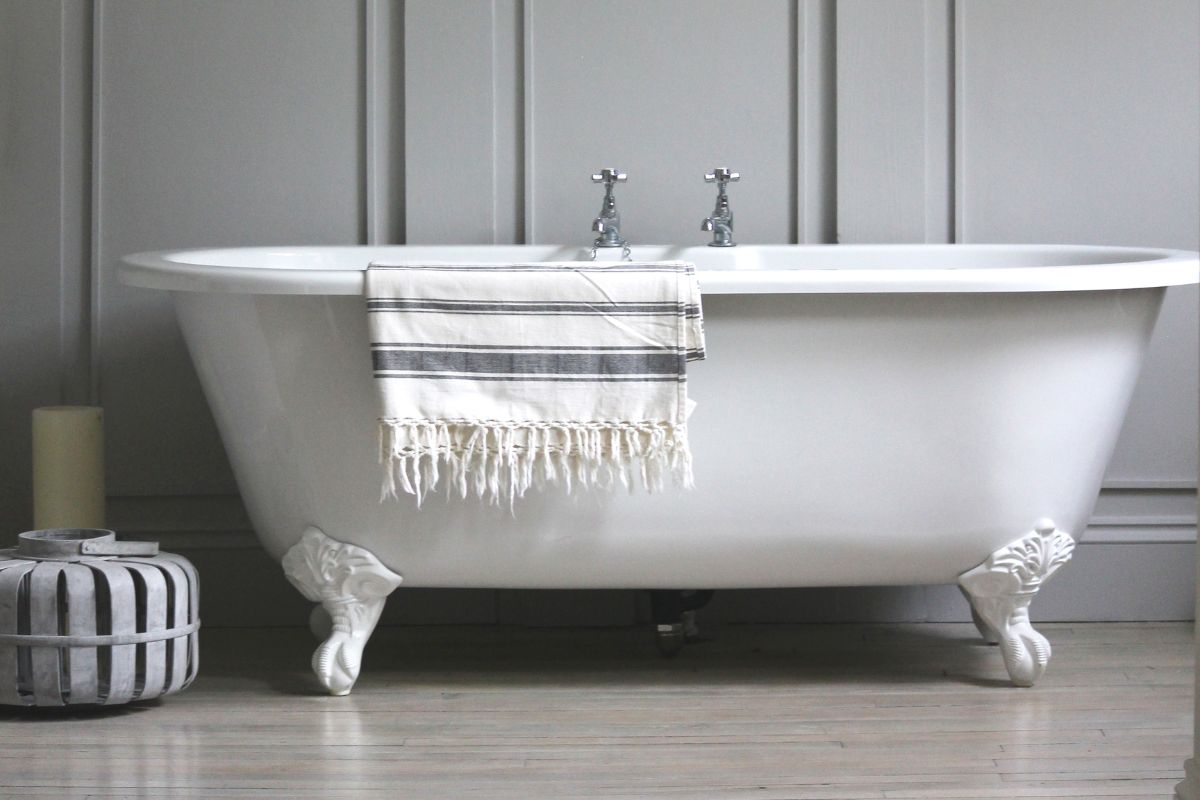There is something special about cast iron tubs. For centuries, it has been chosen as a great addition to your unique bathroom aesthetics. Because of its durability and because it never goes out of style, everyone wants to invest in one.
No matter why you want to put one in your bathroom, especially if it’s on an upper floor, you need to think about how much a cast iron tub weighs.
An empty cast iron bathtub may weigh anywhere from 225 pounds to over 500 pounds, depending on its dimensions. Once it’s full of water and a person is in it, you can add up to about 500 pounds.
There are other factors, such as how much your bathroom floor can support or the different types of cast iron tubs, which will be essential. Follow this article to learn everything about iron cast tubs.
How Much Does A Cast Iron Tub Weigh?
A cast iron tub’s weight varies depending on its size and form, including whether it is freestanding or alcove.
You also need to think about the size of a cast iron tub, which is known for its deep soaking areas. When there’s more water, there’s more weight, and some bathroom floors can’t handle that.
Freestanding And Claw-Footed Cast Iron Tubs

Because they don’t need walls to support them, freestanding cast iron tubs give you many more options for size, placement, and design than alcove tubs.
They are the most eye-catching part of the room because they show classic elegance and modern functionality. The classic cast iron tub with claw-like feet is very popular.
If you like to soak for a long time, you’ll like how many freestanding cast iron tubs are made with lounging. Single-slipper and double-slipper styles have gently sloping raised ends so you can relax.
Dimensions
- A typical cast iron tub is 55–72” long and 27–32” wide, like most freestanding bathtubs.
- A 72″ cast iron tub may weigh more than 500 pounds, compared to 55″ cast iron tubs that weigh between 250 and 300 pounds.
Alcove Cast Iron Tubs

Alcove cast iron tubs differ from their freestanding counterparts in that they have walls on three sides that are safe for water.Most bathrooms with a small amount of floor space have them.
Alcove tubs have fewer design details and are almost always rectangle-shaped. The size of your alcove also limits how much you can change the dimensions of older tubs when you replace them.
Dimensions
- Standard bathtub alcove length is 60″, although they might be shorter or longer depending on the size of the bathroom.
- Alcove cast iron bathtubs are often much lighter than comparable-sized freestanding baths since they are unfinished on three sides. A 60″ tub should weigh between 300 and 325 pounds.
Why Is a Cast Iron Tub So Heavy?
Iron is a tough metal that is not very malleable, so it breaks easily when struck. To make a strong tub, the cast iron must be very thick and have an enamel coating to protect it.
Cast iron and enamel have a combined density of about 10.13 g/cm3, which is 632 lbs/ft3. All that weight adds up quickly if manufacturers want to make a thick enough cast iron tub to last for generations.
If you are worried about the strength of the floor in your bathroom to sustain the weight of a cast iron tub, you may need to reduce the size of the tub.
A smaller bathtub not only weighs less but also limits how much water you can put in. This keeps the floor from giving way under the weight of the water.
Benefits and Drawbacks of A Cast-Iron Tub

You’re already aware of the weight of cast-iron tubs; let’s see what pros and cons the tub offer you.
Benefits
- Cast iron is one of the things that will last the longest. So, your tub will be a nearly permanent addition that won’t break.
- Bathtubs made of cast iron have a timeless appearance that will never go out of style.
- Cast iron is hard to scratch and break. So, you don’t have to do much to care for it. It also saves money because of the low-maintenance feature.
- You can choose from different sizes and shapes of these tubs; there are a lot of options.
Drawbacks
- Bathtubs made of cast iron are heavy, so they need extra support. Also, it could cause damage to the floor.
- These tubs cost a lot of money. So, they aren’t very good for your budget.
Do I Need Additional Floor Support For My Cast Iron Tub?
Before you give up on your dream of taking long, relaxing baths in an old cast-iron tub, do a few quick calculations to determine how much weight your bathroom can hold.
How to Calculate Bathroom Floor Capacity
- The 2020 International Residential Code says that each square foot of flooring in a home must be able to hold at least 40 pounds. You can determine if your bathroom can hold your tub by multiplying this number by the size of your bathroom.
- For example, if your bathroom floor is 6 feet by 7 feet and the weight limit is 40 pounds, you would multiply 6 by 7 by 40 to get 1680 pounds. Cast iron tubs should naturally be able to fit in bathrooms with more space.
- But remember that this weight limit has to cover everything in your bathroom, like the toilet, sink, and others.
How to Calculate the Total Weight of a Cast Iron Tub
- We’ll choose the 48″ x 30″ Norfolk Cast Iron Classic Clawfoot Tub because it’s easy. It weighs 225 pounds when empty and can hold 37 gallons of water.
- Multiply the capacity by 8.3 lbs to get the weight of the water (the weight of a gallon of water). 37 times 8.3 equals 307.1 pounds in this case.
- Then, add that number to the weight of the tub when it is empty (225 pounds) and the weight of the heaviest person who will use the tub (let’s say 180 pounds).
- That adds up to 712 pounds, which a fully furnished 42-square-foot bathroom should be able to hold.
How to Increase The Floor Support In A Bathroom
You may increase your bathroom’s weight capacity in a few ways. Before doing any of these tasks, consult a specialist to avoid house damage.
Adding Floor Joists
- Under the floor of your home, there are long, evenly spaced boards called joists. Most support joists in homes are 16 inches apart, but this number can range from 12 inches to 24 inches, depending on the type and quality of the wood.
- A contractor might be able to add more planks under where the bathtub will go to strengthen the joist system.
Pouring Polished Concrete
- Adding polished concrete to an existing floor is not easy, but a standard 4-inch-thick concrete floor can hold up to 151.56 pounds per square inch. You now have access to a considerably larger variety of cast iron tub sizes.
How to Maintain Your Cast Iron Tub?
Cast iron tubs are pretty easy to take care of.Here are some tips for extending the lifespan of your iron cast tubs.
For Daily Maintenance
- To avoid soap buildup, it’s best to rinse and wipe the tub (first with a wet cloth and then with a dry one) after each use.
- Make sure the faucet doesn’t leak, which can cause rust to form.
For Regular Cleaning
- Pour warm water into the tub and add dishwashing liquid. Soak for 30 minutes, then drain and wipe with a soft cloth.
- Use a Mr. Clean Magic Eraser or something similar to get rid of regular dirt.
To Remove Stains
- Use a soft sponge and baking soda to clean the tub’s inside. Pour vinegar over the baking soda, and then use the side of the sponge that isn’t rough to scrub the tub. Rinse it well, and then use a soft cloth to dry it.
- Try cleaning products made for cast iron, like Kohler’s cast iron cleaner, to get rid of tough stains.
Do Not Use
- Cleaning products or tools that are rough
- Acidic formulas
- Excessive scrubbing
FAQ
Can You Scrap a Cast Iron Tub?
Yes, you can recycle a cast iron tub as scrap metal.Cast iron sinks and tubs are built to survive for decades and are resistant to harm that would destroy other materials. If you have a sink or tub made of cast iron, it may be worth scrapping it, especially if you can’t sell it to someone else.
Cast Iron Tub Price?
The price is a major disadvantage of cast iron. Prices for newer cast iron tubs can start as low as $1,400 or even less. A standard tub can cost up to $9,000 or more, and high-end tubs can cost more than $80,000.
How Can I Tell If My Bathtub Is Steel Or Cast Iron?
If the tub makes a light, tinny sound when you tap it with your fingernail (tak, tak, tak), it’s probably made of steel. It’s likely made of cast iron if it sounds more solid, resonant, or like a bell.
Conclusion
Hopefully, the article covered all your queries regarding ‘how much does a cast iron tub weigh?’.
Depending on the size and style, an iron cast tub can weigh anywhere from 225 lbs to more than 500 lbs, excluding the water. Before you try to install a cast iron tub yourself, it’s always a good idea to get a professional’s opinion after you’ve done some quick math on your own.

Amos Christen graduated with a bachelor’s degree in Interior Design from Drexel University — Philadelphia, PA. Since 2003, Amos has worked with top interior design professionals in this area, including architects and interior/graphic/lighting designers. As a skilled interior designer, Amos Christen is highly versed in fine arts and crafts and uses that to supplement his main area of expertise. He often publishes articles related to home décor on several websites, including Sprucetoilets.com, Sprucebathroom.com, and Mybesuitedhome.com. He also contributes to leading interior design magazines.
